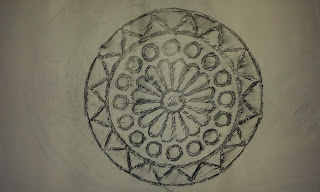I've been told that Kemptown has many good coal holes, and so it should - being stuffed with fine Regency and Victorian homes needing copious amounts of coal. I had half an hour to kill the other evening and did a quick circuit of the streets to the south of the County Hospital.
I encountered a fine mix of people - skinny dodgy-looking yoofs with big scary dogs, large shaven-headed middle-aged men with small yappy dogs, ladies of leisure drinking red wine on their doorsteps and smooth couples in matching dressing gowns on their Regency balconies.
I also encountered a fine mix of coal hole covers, including some larger-than-normal ones and some from manufacturers not encountered further west. Feast your eyes on this lot.
First up, in Sudeley Terrace - a trio of Haywards covers in nice iron surrounds.
Moving on down to the seafront, on Chichester Terrace we find these great ones - some supersize like this Haywards with 19 glazed hexagonal panels.
And this nice chevron flower design.
And this very pleasing 'bullseye' Woodrow design.
this beautiful Clare, Hunt design from Shoreditch...
this unnamed design with slots in, and
a larger version of a fairly common design.
Round the corner, in Chichester Place there is this Haywards self-locking patent design 'D' model.















